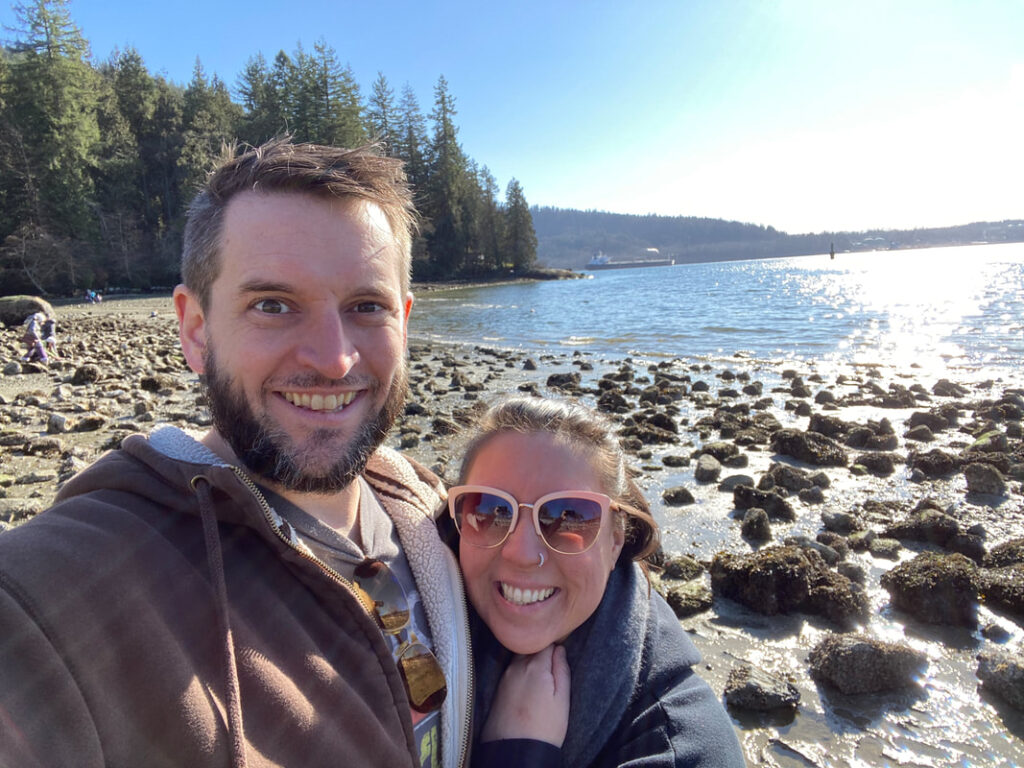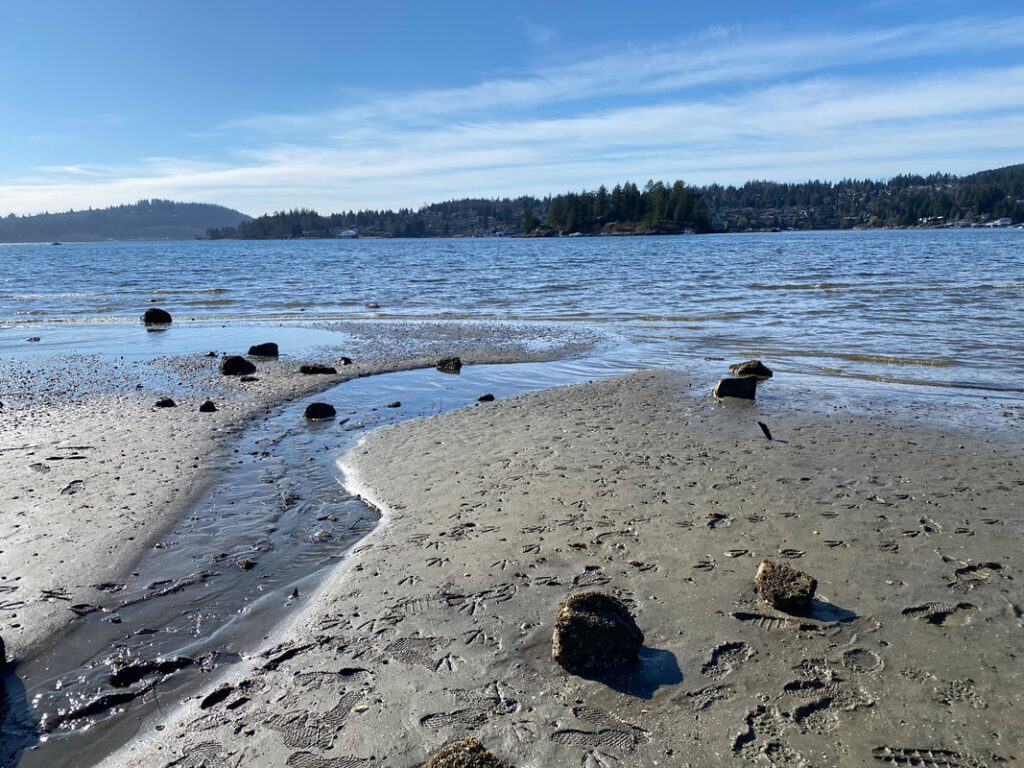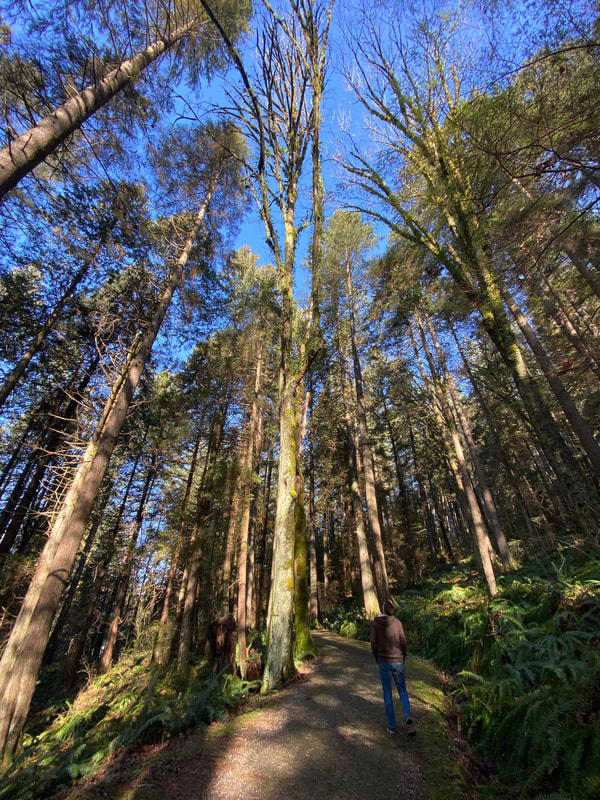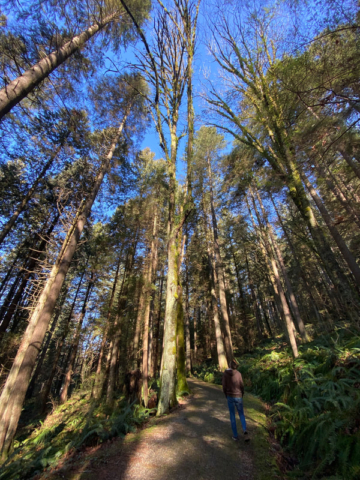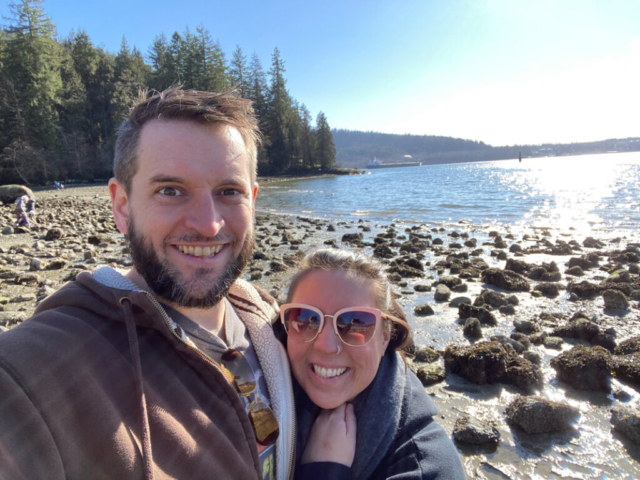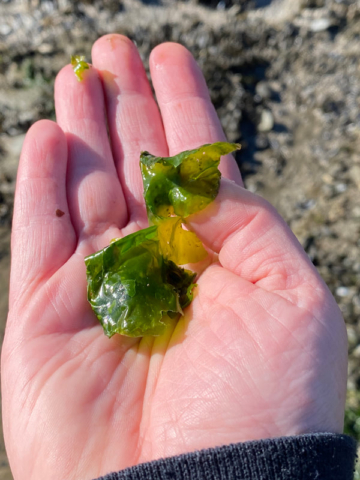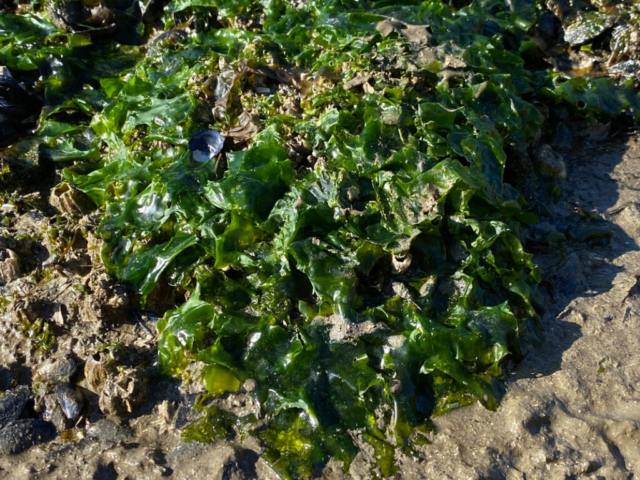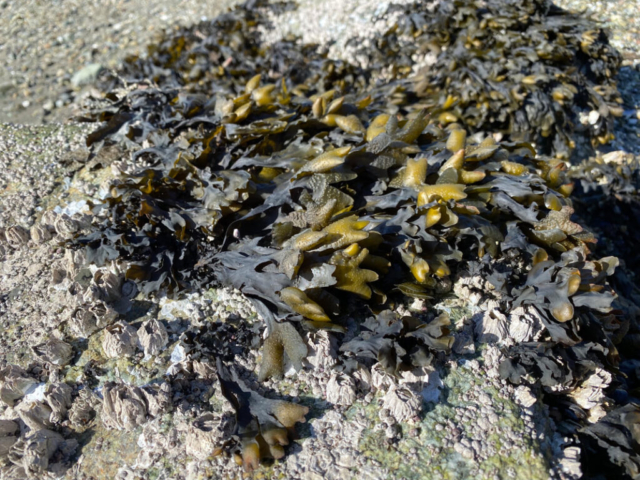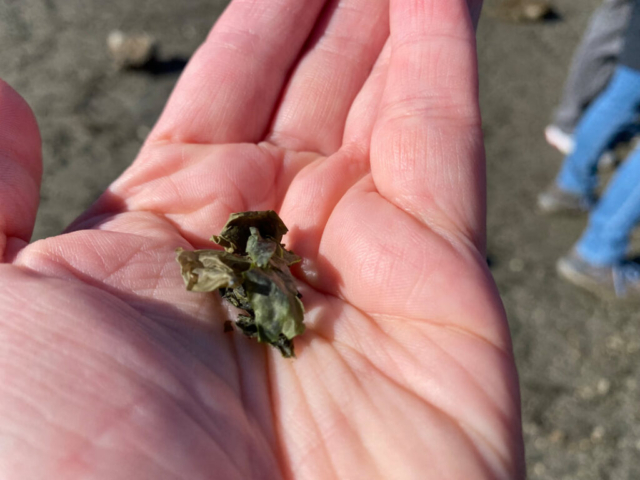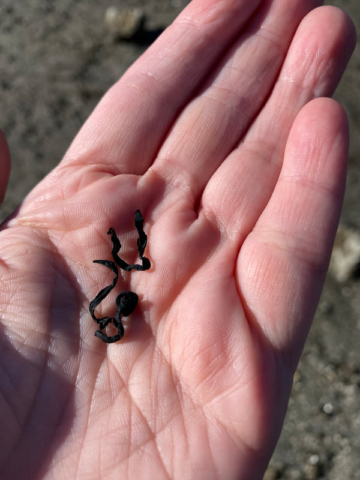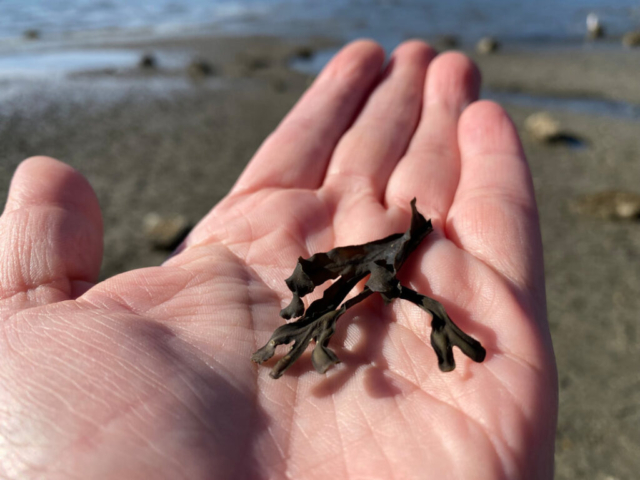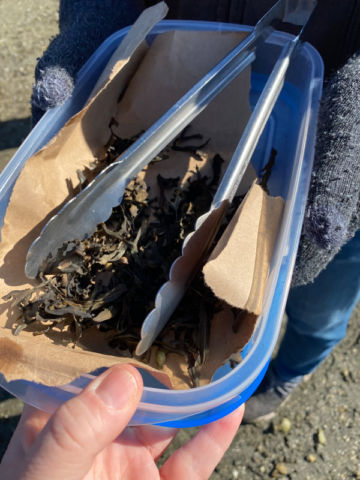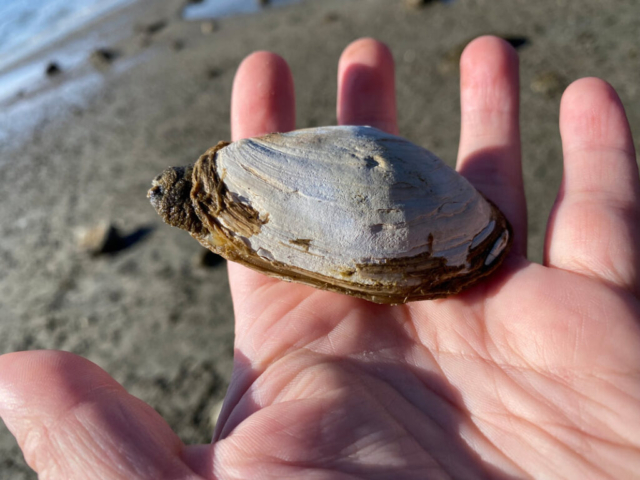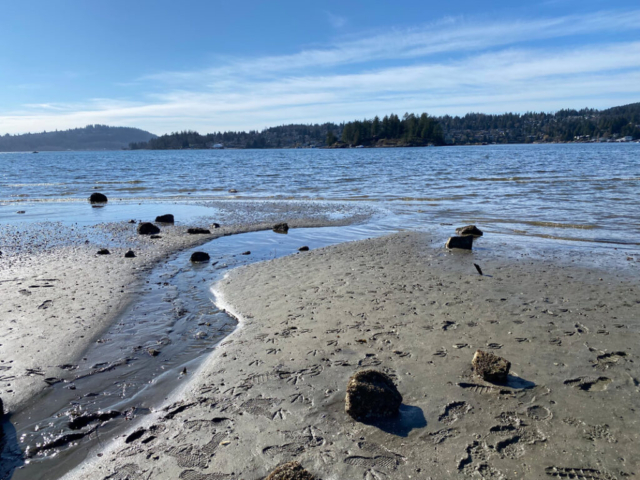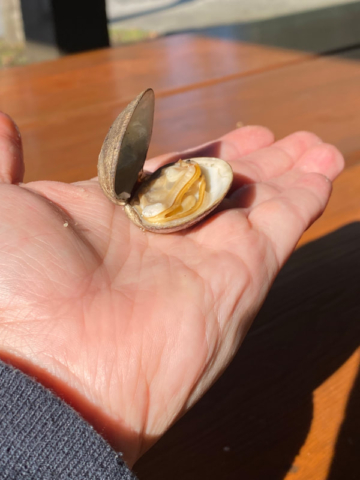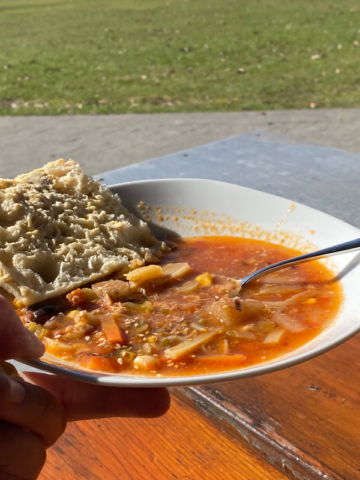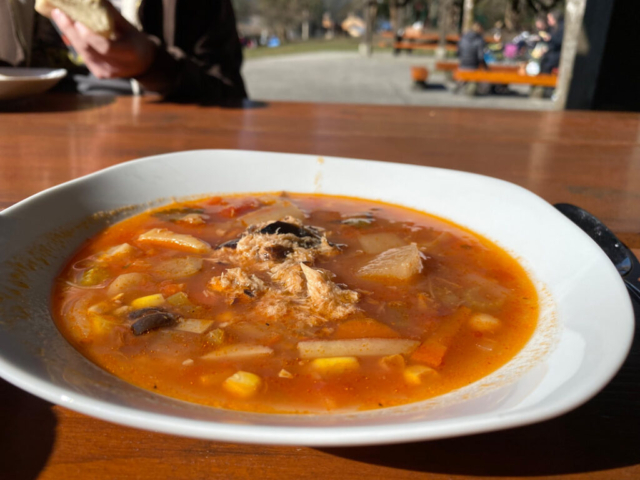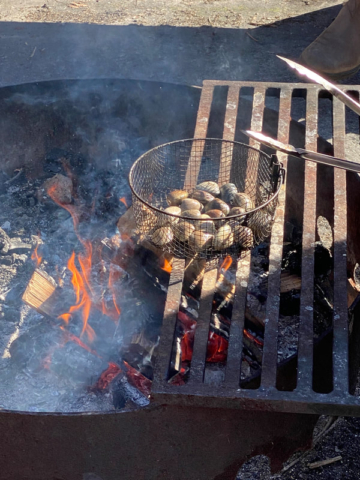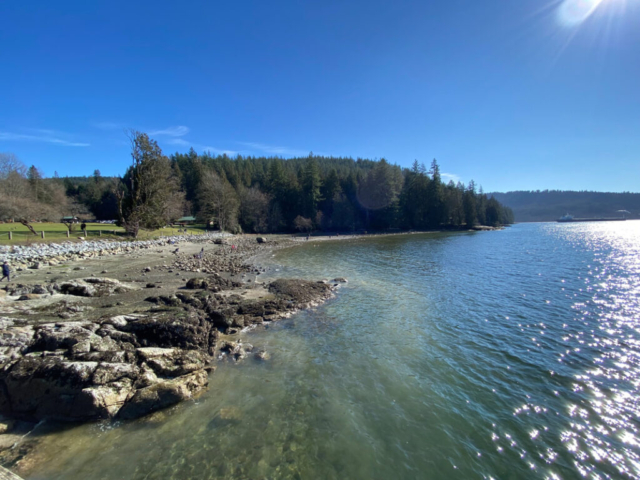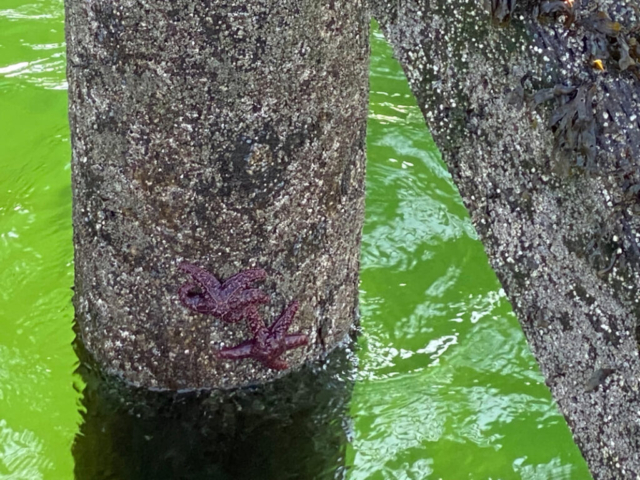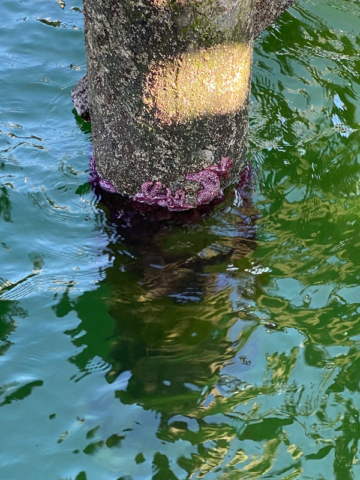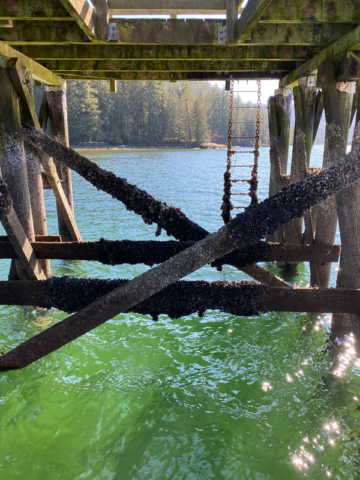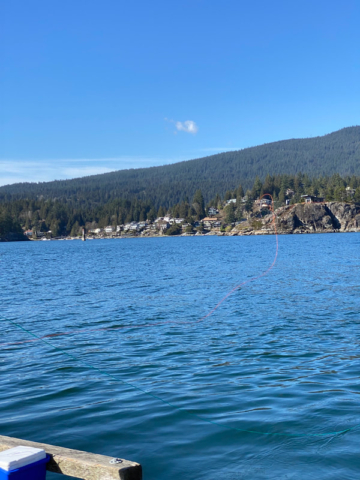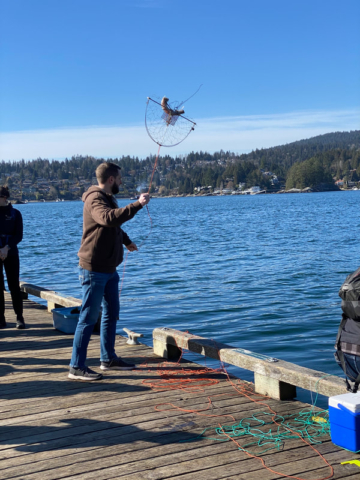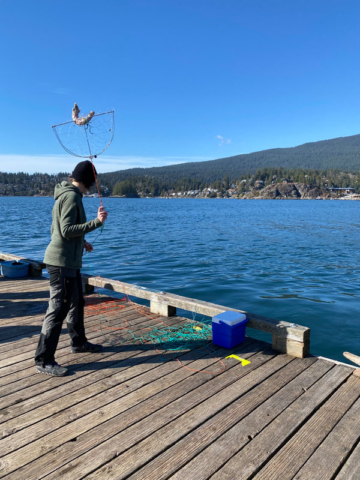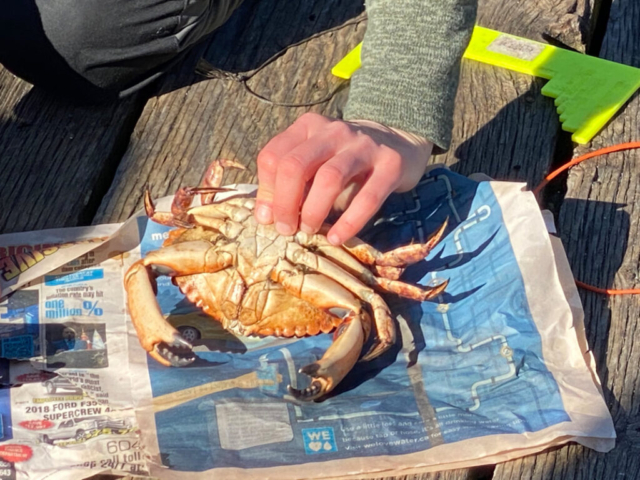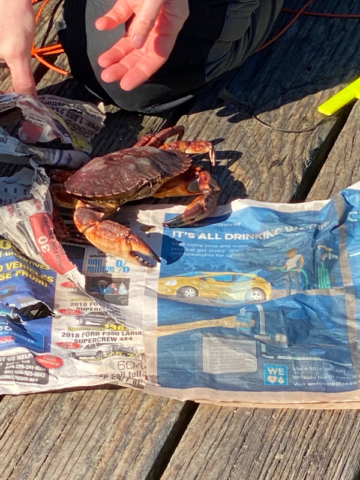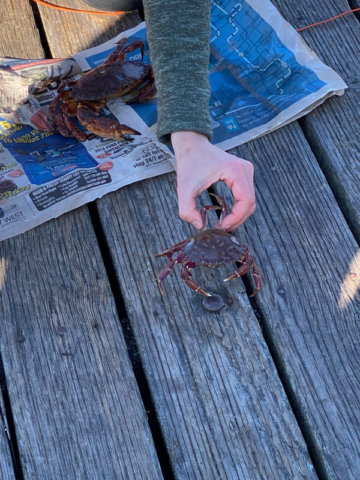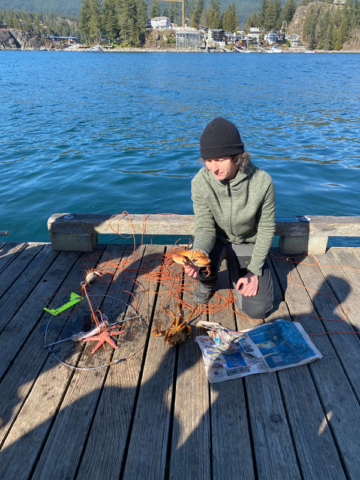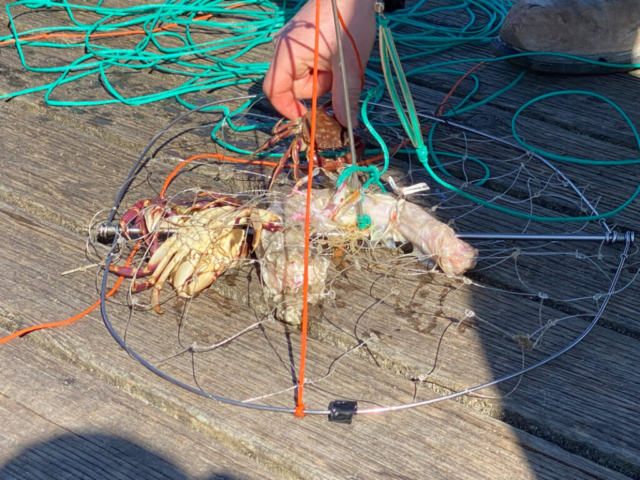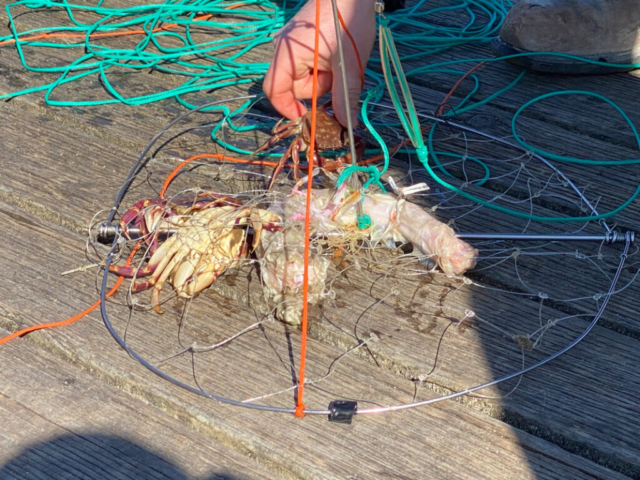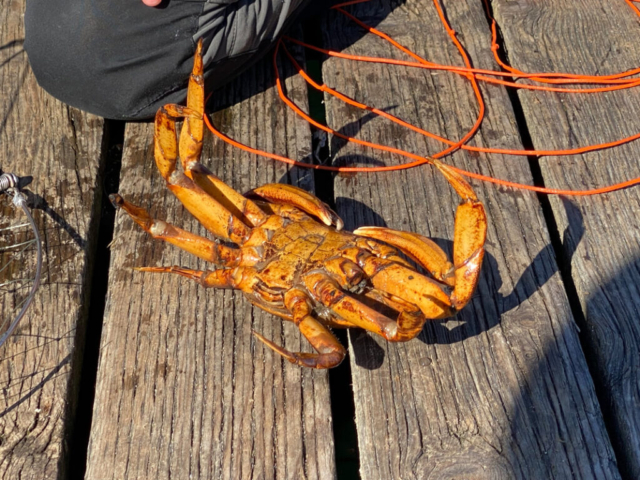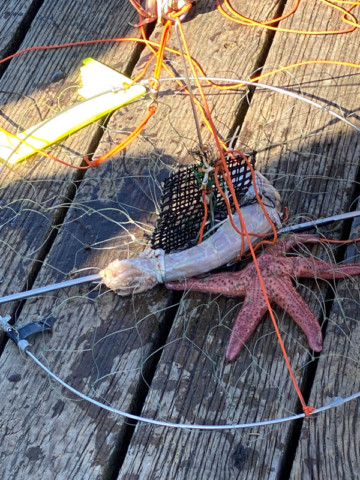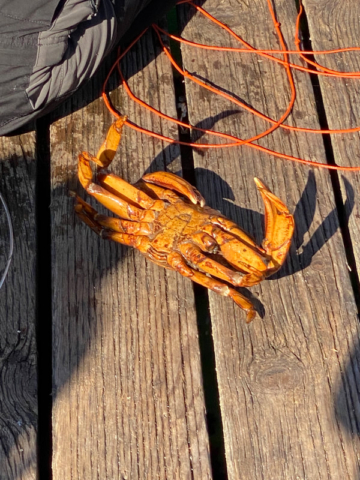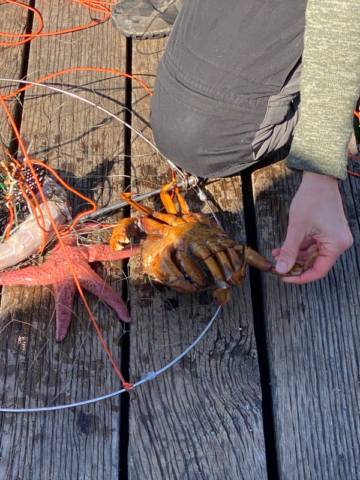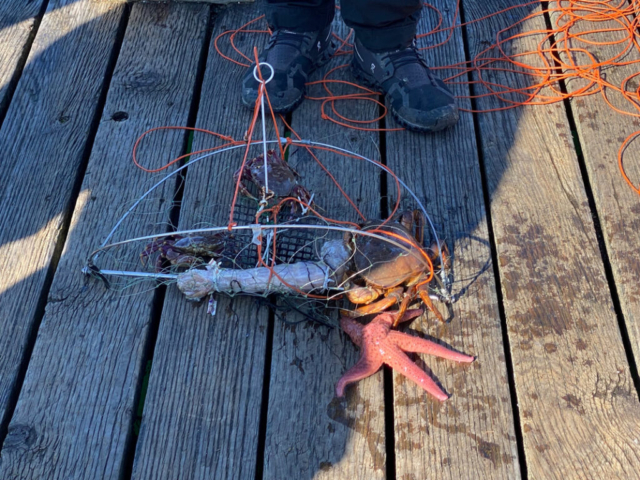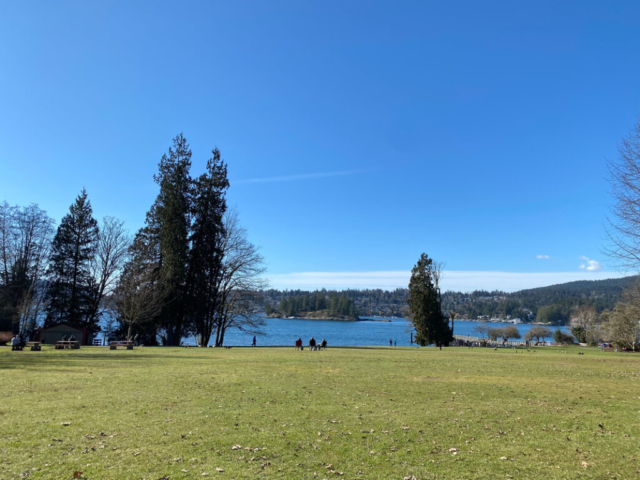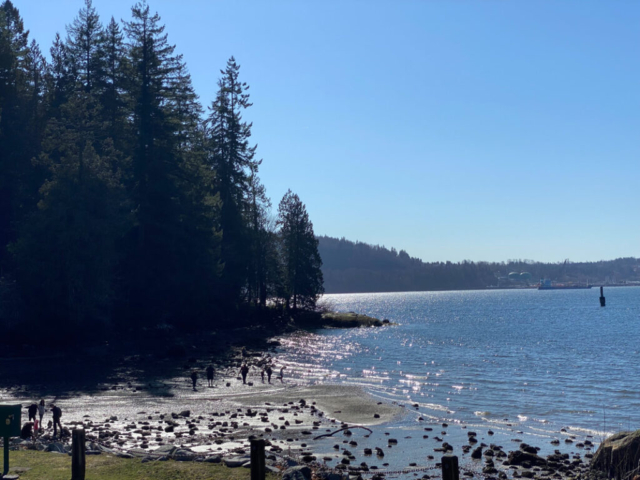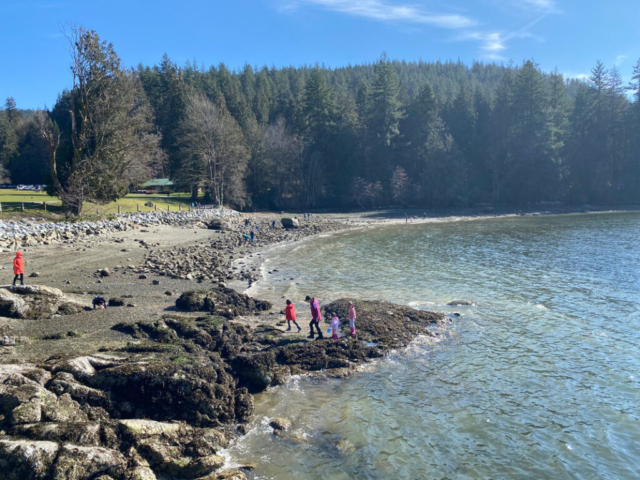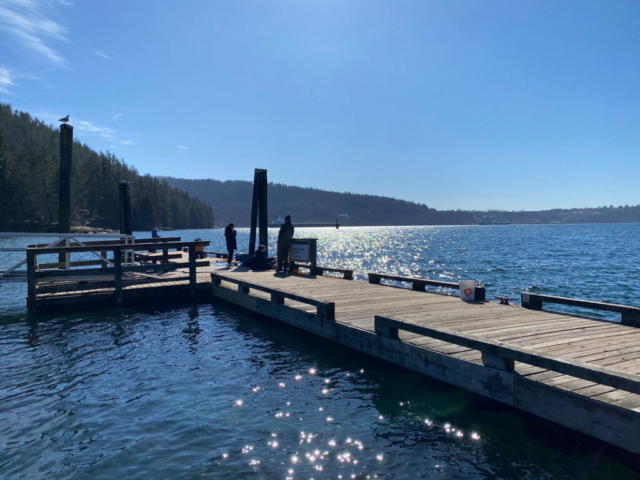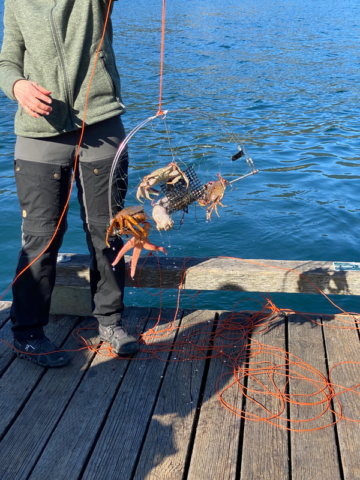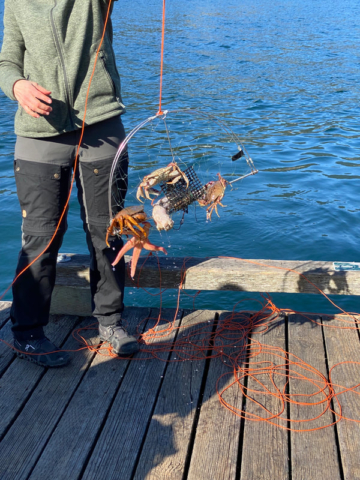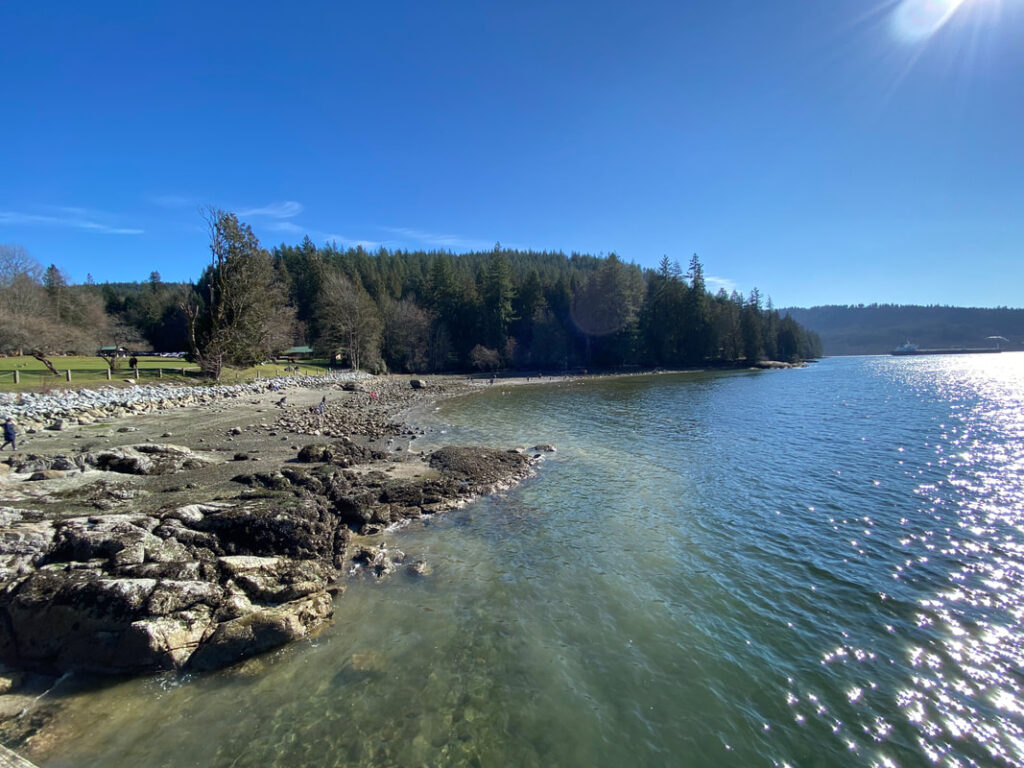
What can you harvest from the seashore without a boat?
The sea foraging course was put on by Chef Robin of Swallowtail Culinary Adventures (one of several courses/workshops we’ve now done).
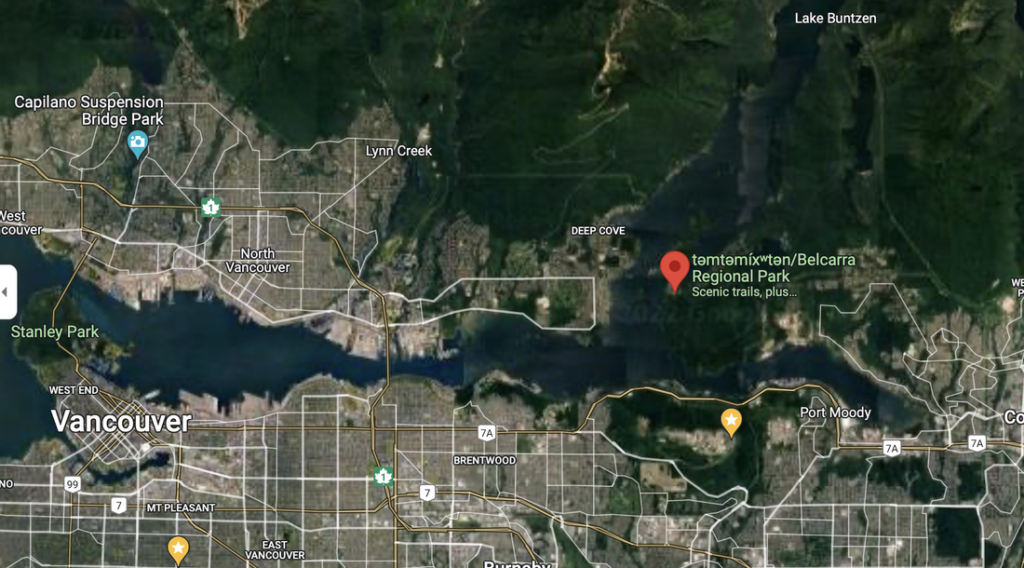
It was hosted in təmtəmíxʷtən land (Belcarra Regional Park). Note, that this was an educational course on foraging; however, as the area is a regional park, no foraging was permitted. However, crabbing was allowed from the pier, but requires a A Tidal Waters Sport Fishing Licence. There are also catch size requirements, so that is important to know.
From an ethical standpoint, we always want to consider balance and ecosystem. It’s easy in the age of modern technology, global civilization that we are very much still a part of the food chain. Even when a large percentage of our species is largely removed from the natural world for most of the day. It’s funny how we get stuck in our anthropocentric views by default. Chef Robin talking about sea urchins being plentiful because we (humans who have come before us) decimated the otter populations, who were a primary predator for the urchins. As an aside, this relates to a book I’m reading A World for My Daughter: An Ecologist’s Search for Optimism by Alejandro Frid where he discusses the balance and interconnectedness of our ecological systems and has observed the relationship between the otter population decimation and habitats out of balance because of it.
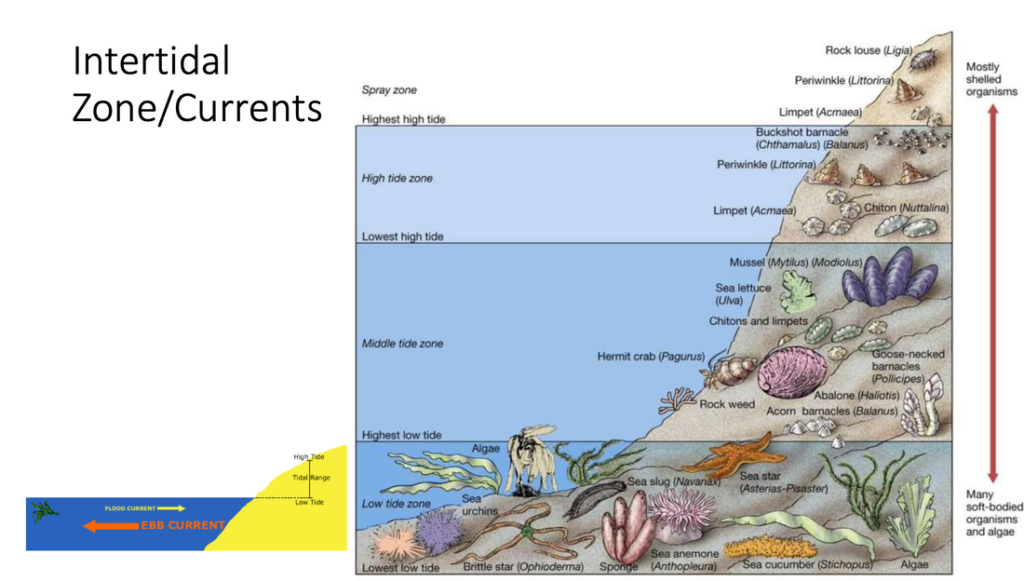
Crabs
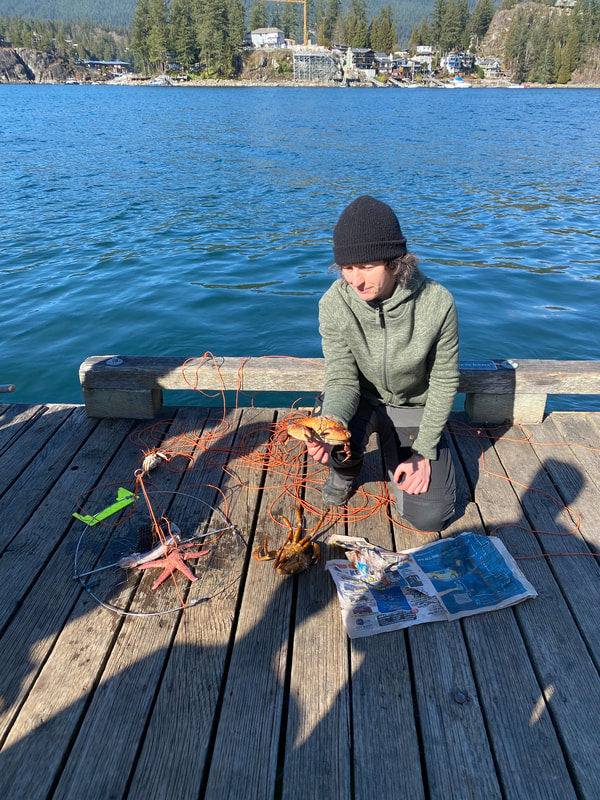
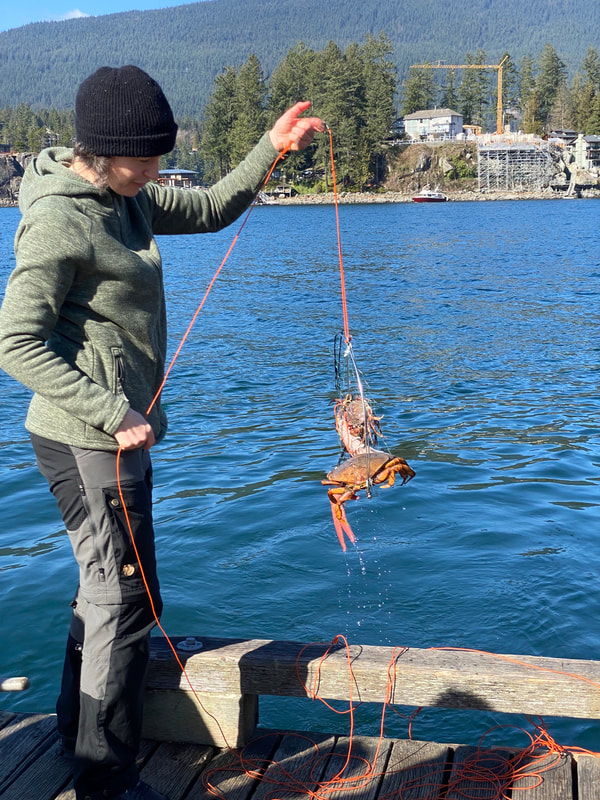
- Crabbing
- Not filter feeder
- Don’t need to worry red tide
- Casting
- Throw as far as you can
- Deeper areas better
- When it hits the ground and tie it
- When pull up keep tension on the line
- Haul
- The crab we got was a Dungeness crab
- Triangle pattern on belly
- Measure
- They like sandy bottoms
- Never transport upside down
- Fold and wrap up in newspaper
- Do not tear little legs off
- Upside down is easiest to pick up
- Leave 15 min and check every 15 min
- Can only take males
- Not filter feeder
- Cooking
- Don’t boil or steam Bc you lose flavor to water
- Better butcher it use a cleaver and take off back shell
- White wine, lemon
- Not for the faint of heart. I got emotionally attached to the crab and not sure I could kill and eat it..
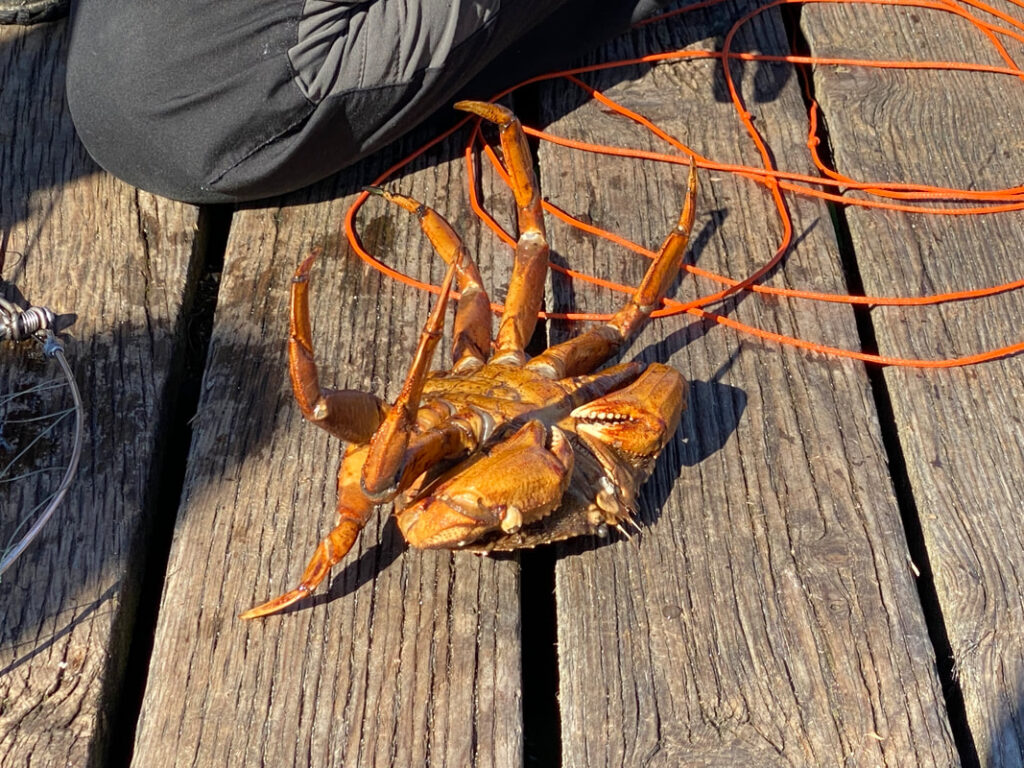
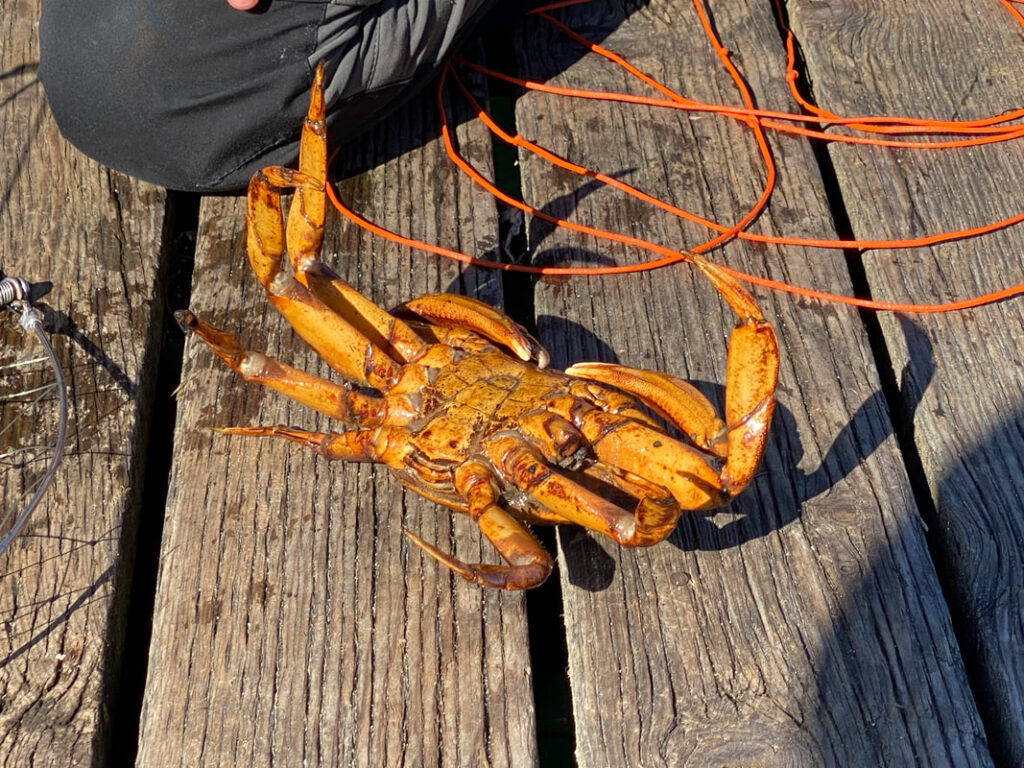
Clams
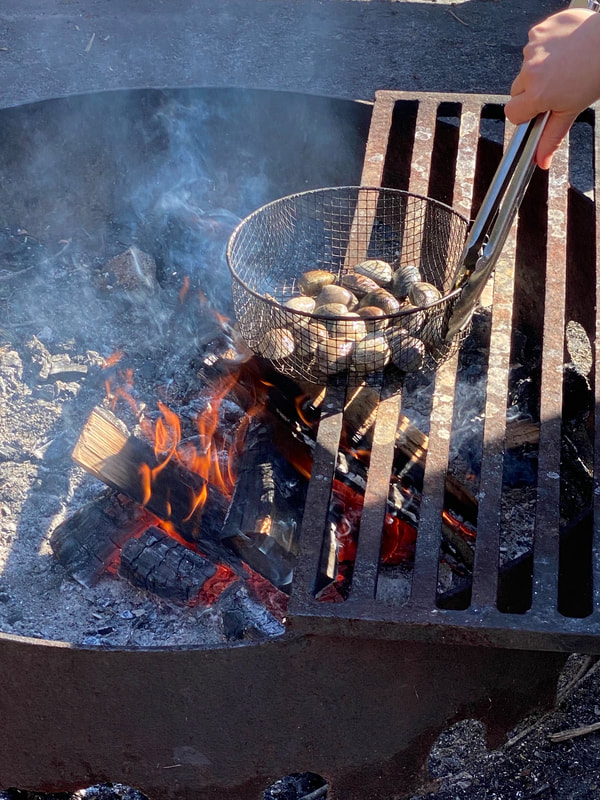
RED TIDE
Check red tide (PSP – Paralytic Shellfish Poisoning – a serious illness caused by eating shellfish contaminated with harmful neurotoxins)
Harvest
- Decide on digging depth based on the clam species (less than 10 cm = most easy clams) – littleneck/manila/cockle/varnish/bent nose/butter clam
- Dig deeper – larger clams like geoduck go up to 5ft deep
- Use hands, rake or narrow spade
- Dig next to siphon holes (not into it) so you don’t break the shells
- Bucket take bottom of bucket off
Bring to beach with space and rubber glove
Dig next to hole, and carefully, dig 1 foot down
Put bucket and hold sand wall from coming down
Harvest as tide is going down (not coming up) Bacteria grow in sand in the sun so better when water is going down - Grab by shell (not the tube otherwise it can tear off)
- Always replace the sand from the holes you dig to preserve habitat.
- Store then in bucket with little bit of seawater 1 hour to overnight to get rid of sand (keep cool)
Types of Clams: Bilvalves
- Littleneck
- native, Protothaca staminea
- coarse sand/mud/gravel
- mid-lower intertidal
- round shaped, cross hatched ribs/growth lines, 7.6cm max
- no streaks, 1 siphon
- Manila
- Venerupis philippinarum
- oval shaped
- Streaked/striped quality
- if there are 2 siphons, it’s probably Manila
- 7.6cm max, similar to littleneck, grey/brown/streaked, siphon tip is split
- Varnish Clam
- Nuttalia obscurata
- purple inner shell, brown outer
- hold toxins longer, avoid harvesting
- Butter clam (Saxidomus giganteus)
- sand/gravel, mid-lower intertidal
- cut off black siphon tip before eating
- Nuttalls cockle
- Clinocardium nuttallii
- near surface, low intertidal, mud/sand/gravel
- Deep radial grooves and grilled edge
- 14cm max
- Bent-nose
- Macoma nasuta
- mud/sand/bays, near surface, intertidal zone
- max 7.6cm
- One edge is slightly curved in profile
- Horse clam
- Tresus capax
- Razor clam
- Siliqua patula
- Softshell clam
- Whitish shell with brown rib
- Can’t fully retract siphon
- Can be confused with horse clams
- Geoduck
- Panopea abrupta
- mud/sand bays, buried 3 to 5 ft deep in sand
- can live to 150 years old! (20cm max)
- Look for quarter sized holes
- At the base can’t retract because siphon is bigger than shell
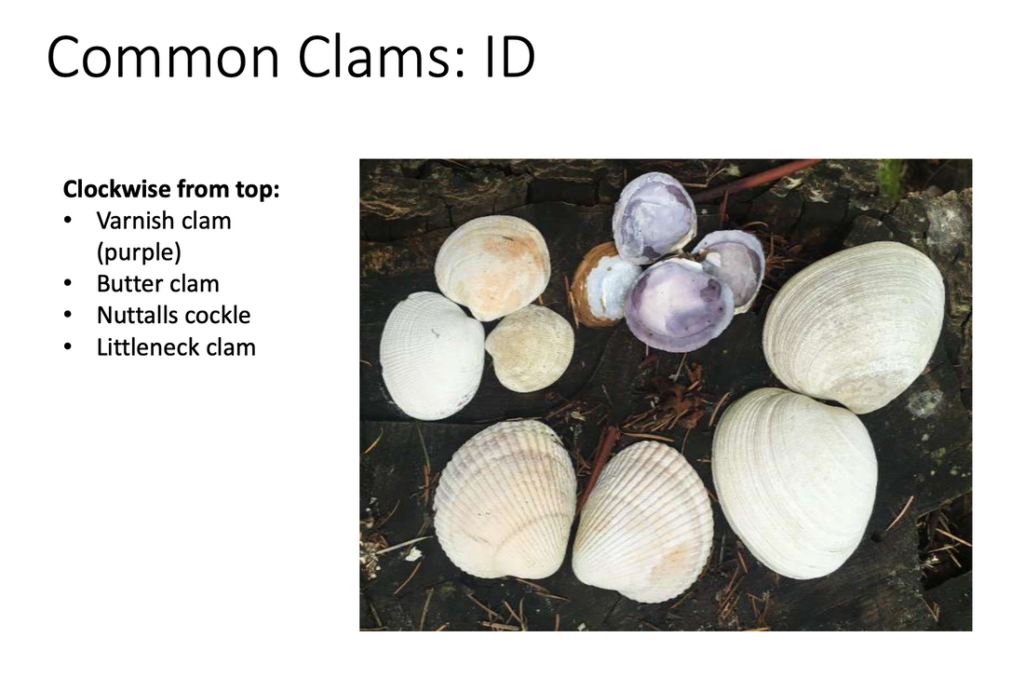
Cooking
- There’s a myth that you can’t eat clams if the shell is still closed after cooking
- Leave those clams in and continue to cook for additional 2-3 minutes and they’re edible
- Test for “aliveness” by tapping the open shells before you steam to make sure they are moving before cooking.
Seaweed
Fun facts
- Loaded with minerals, vitamins, iron and more!
- BC has the largest variety of kelp in the world
- Sea lettuce and sea asparagus: chef favourites
Seaweed Groups
- Red,Green,Brown
Types
- Sea Lettuce (Ulva lactuca)
- Trim a few blades
- Bullwhip kelp (Nereocystis luetkeana)
- Bladderwrack/rockweed (Fucus gardneri)
- Branched pattern (kind of like bubble wrap)
- Can use bubble area like aloe Vera for sunscreen
- Can eat fresh, baked
- Sea cabbage (Saccharina sessilis)
- Dried and used as part of making dashi stock
- Key to this species is that it lacks a stipe (stem)
- Blade has puckered appearance
- Branching holdfast
- Winged kelp (Alaria spp.)
- similar to wakame (also an Alaria species)
- Sea vegetable used in soups and seaweed salads
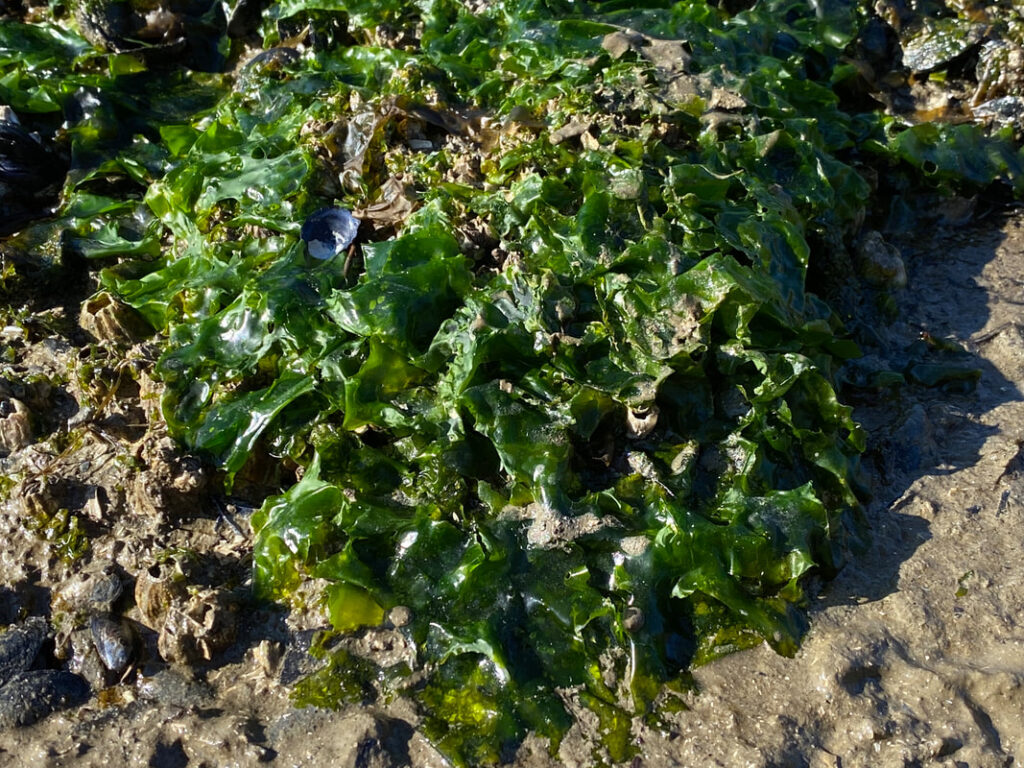
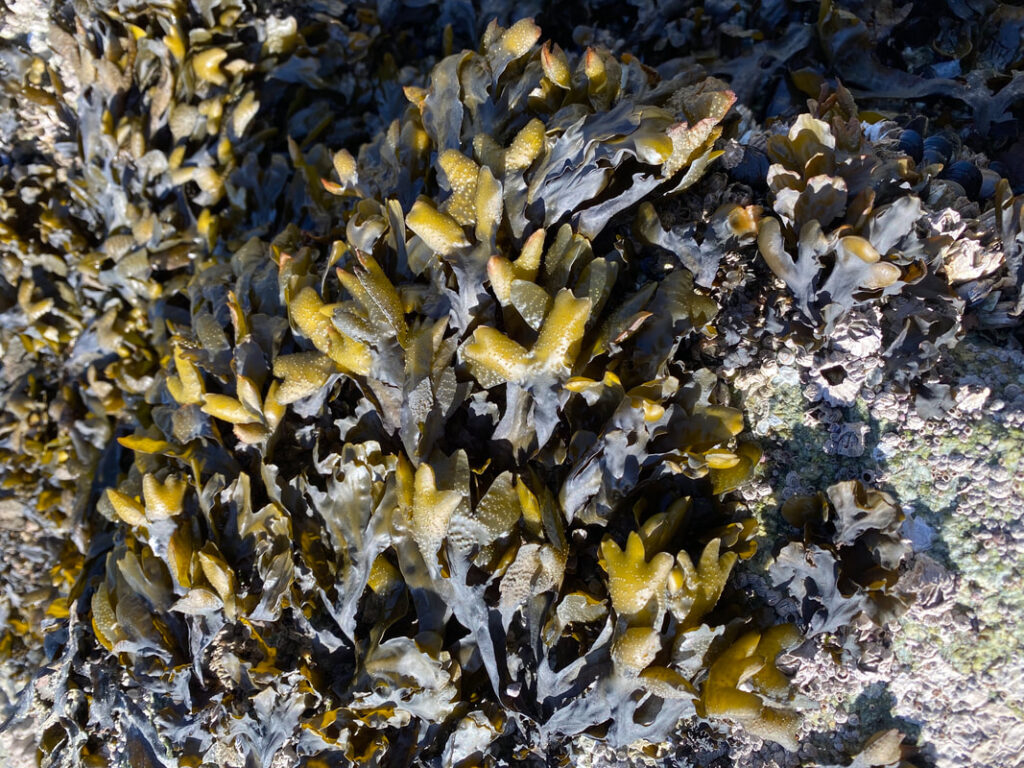
Ways to Serve
- Sundried and hang on branch to dry
- raw
- deep-fried
- pickled
- smoked
- steamed
- dried
- roasted
- baked
- in soups, dried salty snacks, fish wraps, in croquettes, furikake(spice mix) on rice
Online Resources
- Seaweed Sorter app (Pacific Northwest)
- e-flora BC Algae page for infield ID help
Sustainable seaweed harvest
- Prune to preserve majority of plant for regeneration
- Harvesting for personal use = no license needed in BC
- Not filter feeders
- Don’t worry about red tide
- However, can hold onto heavy metals
- Spring/summer some of best time as they also have their own cycles
- Most are edible year round but annuals do die off in fall/winter frequently
- Colder water and deeper water the better seaweed
- With good current provides fresher and healthier
- Do not harvest near marinas or industrial areas
- Chef Robin doesn’t get from lower mainland
- Collect seaweed when the tide is low. Best practice is to harvest floating seaweed (unattached) in good condition.
Generally, there are very few poisonous seaweeds, but be wary of acid kelps and blue green algae as these are toxic
DO NOT EAT ACID KELP
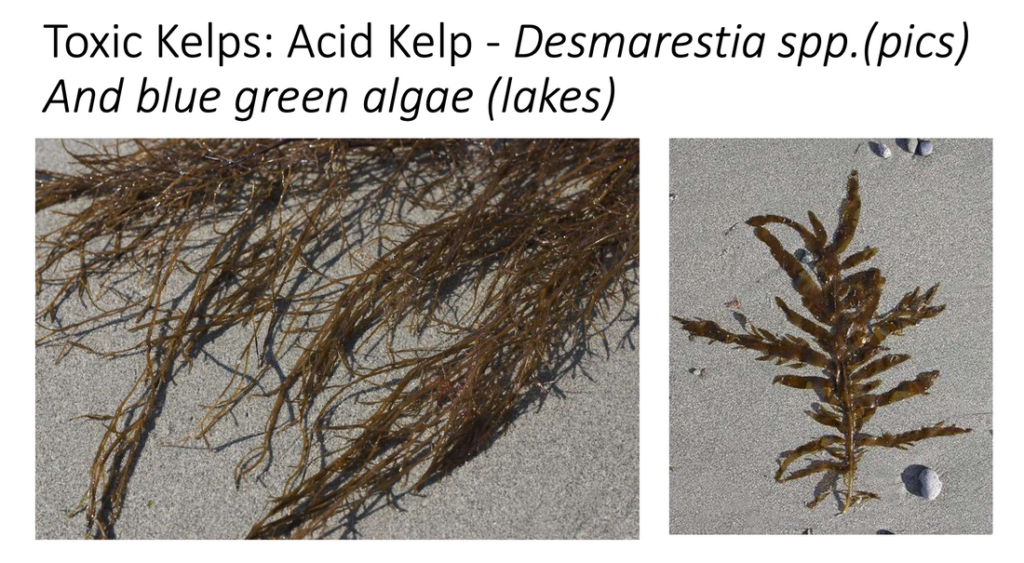
More learning
Sea Urchin
- Most delicious things in subtidal
- “Parmesan of the sea” – Chef Robin
- Subtidal
- Not fresh from stores often
- Harvest it and try it fresh and delicious Negative tide- when it gets below usual low
- CR went at midnight at low tide and shuck a bunch before freezing
- Use gloves- sea urchin spines can puncture and infect
- Throw then into Tupperware
- Any time using anchovy paste, can substitute with sea urchin
Limpets
- can harvest anytime
- Salted from sea
- High tidal zone bigger as the tide goes down
- tip: carry lime when and make fresh ceviche
- Sneak up don’t let them see your shadow
Lunch
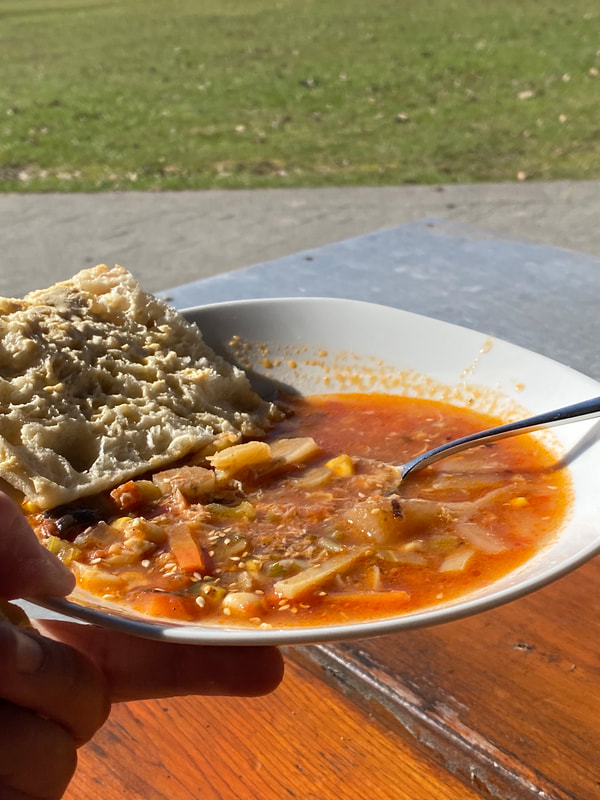
Hot Galiano Seafood Chowder
- Stock for chowder dashi style.
- Harvest kombu and smoked fish added wild
- Burdock, tomato vegetables
- Smoked clams
Bread with sea urchin butter
Important Notes from Chef Robin
Water quality!
- Sanitary conditions/red tide (Paralytic Shellfish Poisoning PSP)
- http://www.bccdc.ca/health-professionals/professional-resources/shellfish-harvesting-sites-status-map
- Don’t harvest around the lower mainland near Vancouver or any major city/industrial area: Seaweed, bivalves (clams/oysters), barnacles, sea snails.
- Creatures that eat bivalves can collect PSP in their organs
- only the meat (e.g. don’t eat crab “butter” (organs) if crab is harvested in city area
- Check in Canada with the Department of Fisheries for water quality in areas like; Gulf Islands, Sunshine Coast, Vancouver Island or the BCCDC
- Check with the Washington Dept of Fish and Wildlife for the same.
- Good areas that you can harvest seafood: Ilwaco, Willapa Bay, Twin Harbors, Copalis, Mockrocks, Kalaloch Beach
Resources
- Resources
- License needed for shellfish harvesting (check local fisheries site for details),
- note the minimum catch size for all shellfish
- No license needed for seaweed harvesting in BC
- Contact these sites to check for PSP(Paralytic shellfish poisoning) for oysters, barnacles, shellfish or sanitary closures (for all fishing) in the areas you wish to harvest
- British Columbia www.pac.dfo-mpo.gc.ca/fm-gp/rec/shellfish-coquillages-eng.html
- Or BCCDC Shellfish Map BCCDC
- http://www.bccdc.ca/health-professionals/professional-resources/shellfish-harvesting-sites-status-map
- Consult included Department of Fisheries maps included to find the area number for the location you want information.
- Washington: www.doh.wa.gov/CommunityandEnvironment/Shellfish
